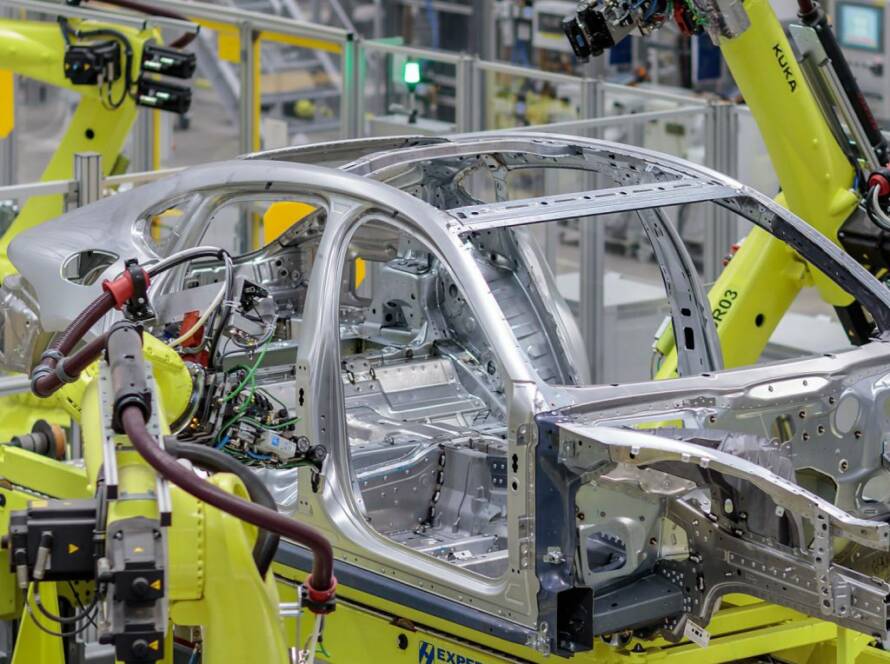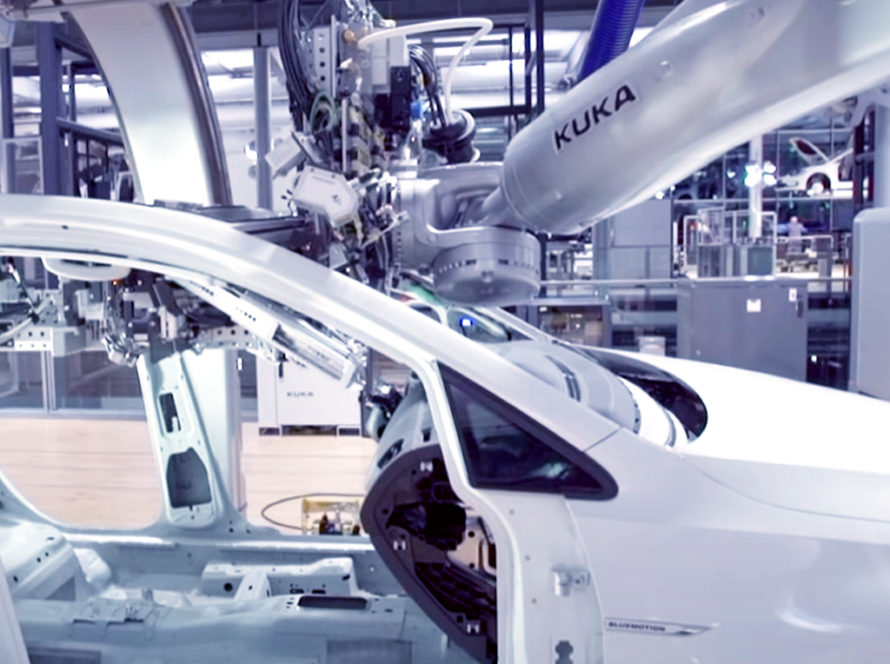In the production of displays for the automotive industry, the challenge is to keep dirt particles away from these sensitive components. Our customer Continental relies on lightweight robots that can be used flexibly and cost-effectively for various handling tasks within our standardized modules.
Initial situation
In a system for bonding display assemblies for the automotive industry, freedom from particles is of the utmost importance. Humans are considered to be a major source of pollution. Up to five different displays are to be glued in each of two gluing systems. The individual parts are to be fed in via four input stations and removed via two output stations.
The ESD capability of the system is a prerequisite.
Implementation
In the first expansion stage of the system, a lightweight robot from UniversalRobots separates load carriers with several components from two stacks, which can be inserted into the station at two points by a worker. Another cobot, which stands on a column with integrated visualization of the system and safety status and is secured with floor scanners, then feeds the individual parts to the system. Care was taken here to ensure that the automated insertion area in front of the system can be accessed quickly and easily by the customer’s employees if necessary in order to intervene manually. In a further expansion stage, the use of mobile robots is planned, which will then automatically feed the tray stacks.
Customer benefits
The automation of this area allows the customer to bond his components free of particles and thus produce the highest quality. The modular design forms the basis for a wide range of applications throughout the entire production process. Both for inspection tasks and for the assembly of components.
Procedure
Material handling with collaborative robots from UniversalRobots. Safety concept with laser scanners from SICK. ESD-capable palletizing unit in modular design.
Parameters
- Cycle time 30 seconds
- Integration of up to 5 types



